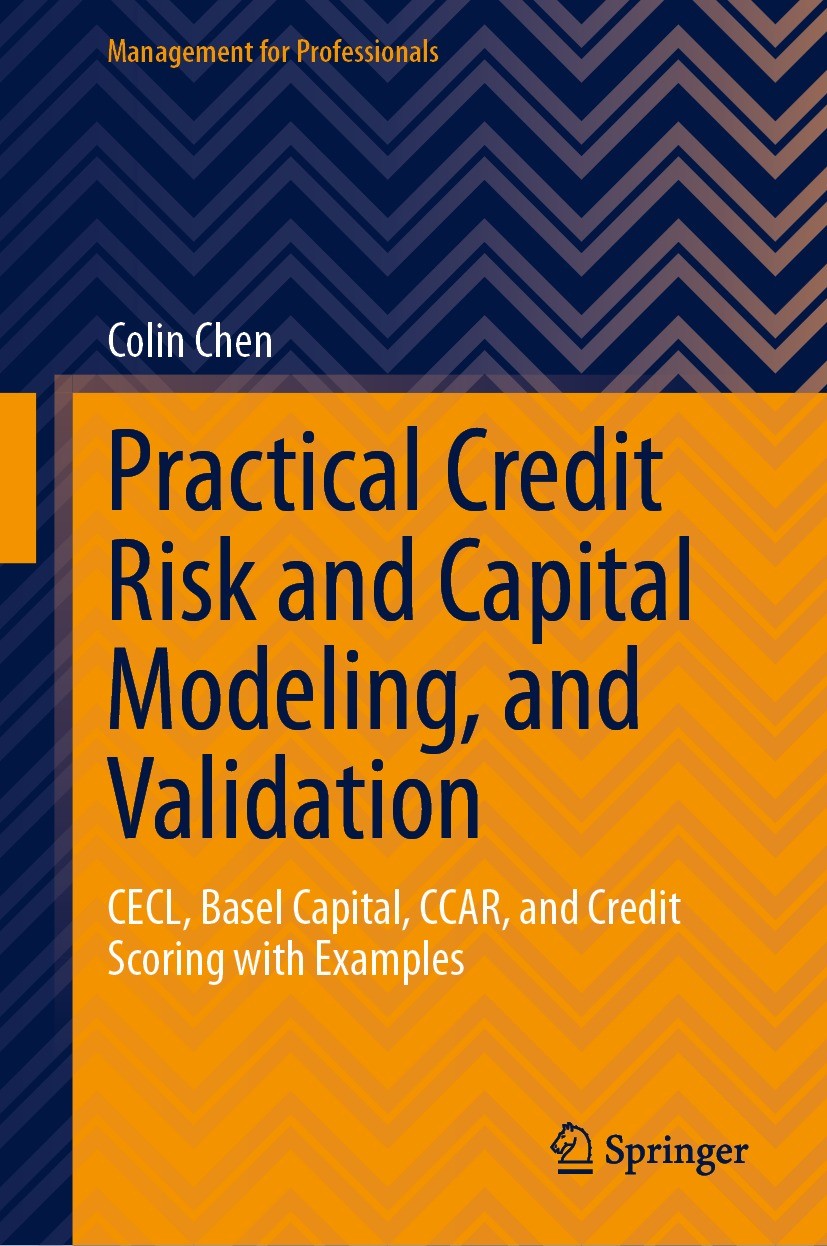| 书目名称 | Practical Credit Risk and Capital Modeling, and Validation | | 副标题 | CECL, Basel Capital, | | 编辑 | Colin Chen | | 视频video | http://file.papertrans.cn/753/752920/752920.mp4 | | 概述 | Offers a guide on credit risk and capital modeling and validation for CECL, IFRS9, Basel Capital and CCAR.Features innovative and real-world techniques and practices with code and examples.Includes te | | 丛书名称 | Management for Professionals | | 图书封面 |  | | 描述 | .This book provides professionals and practitioners with a comprehensive guide on credit risk modeling, capital modeling, and validation for Current Expected Credit Loss (CECL), International Financial Reporting Standard 9 (IFRS9), Basel Capital and Comprehensive Capital Analysis and Review (CCAR) procedures. It describes how credit risk modeling, capital modeling, and validation are done in big banks with code and examples. The book features innovative concepts such as Binary Logit Approximation (BLA) for Competing Risk Framework; Adaptive and Exhaustive Variable Selection (AEVS) for automatic modeling; Full Observation Stratified Sampling (FOSS) for unbiased sampling; and Prohibited Correlation Index (PCI) for Fair Lending Texts. It also features a chapter on credit underwriting and scoring, addressing the credit underwriting risk with some innovations. It is a valuable guide for professionals, practitioners and graduate students in risk management. . | | 出版日期 | Book 2024 | | 关键词 | Credit Model; Adaptive and Exhaustive Variable Selection (AEVS); ACL; Credit Risk; Model Validation; Curr | | 版次 | 1 | | doi | https://doi.org/10.1007/978-3-031-52542-1 | | isbn_softcover | 978-3-031-52544-5 | | isbn_ebook | 978-3-031-52542-1Series ISSN 2192-8096 Series E-ISSN 2192-810X | | issn_series | 2192-8096 | | copyright | The Editor(s) (if applicable) and The Author(s), under exclusive license to Springer Nature Switzerl |
The information of publication is updating

书目名称Practical Credit Risk and Capital Modeling, and Validation影响因子(影响力)

书目名称Practical Credit Risk and Capital Modeling, and Validation影响因子(影响力)学科排名

书目名称Practical Credit Risk and Capital Modeling, and Validation网络公开度

书目名称Practical Credit Risk and Capital Modeling, and Validation网络公开度学科排名

书目名称Practical Credit Risk and Capital Modeling, and Validation被引频次

书目名称Practical Credit Risk and Capital Modeling, and Validation被引频次学科排名

书目名称Practical Credit Risk and Capital Modeling, and Validation年度引用

书目名称Practical Credit Risk and Capital Modeling, and Validation年度引用学科排名

书目名称Practical Credit Risk and Capital Modeling, and Validation读者反馈

书目名称Practical Credit Risk and Capital Modeling, and Validation读者反馈学科排名

|
|
|
 |Archiver|手机版|小黑屋|
派博传思国际
( 京公网安备110108008328)
GMT+8, 2025-11-23 06:49
|Archiver|手机版|小黑屋|
派博传思国际
( 京公网安备110108008328)
GMT+8, 2025-11-23 06:49


